Andrelton Simmons Is The Hardest Player to Strike Out in the Big Leagues
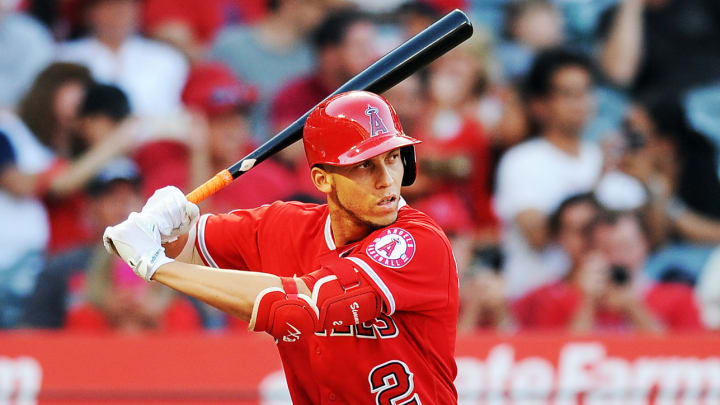
The following is an incomplete list of events that have taken place in the world of sports since May 2:
- The NBA went from its conference semifinals through its finals, with the Pelicans, Jazz, Rockets, Raptors, 76ers, Celtics and Cavaliers eliminated along the way.
- The Warriors won their second straight NBA championship, and third in four years.
- The NHL went from its conference semifinals through its finals, with the Jets, Sharks, Predators, Lightning, Bruins, Penguins and Golden Knights eliminated along the way.
- The Capitals won their first ever Stanley Cup.
- NFL teams have staged rookie mini-camps, OTAs and mandatory mini-camps.
- Real Madrid won its third straight Champions League final.
- Bryan Colangelo got exposed as a wildly brazen tweeter. Allegedly.
- J.R. Smith forgot the score in Game 1 of the NBA Finals.
- LeBron James had the best performance in a loss in NBA Finals history.
- MLB hitters struck out 8,874 times.
- Andrelton Simmons accounted for one of those 8,874 strikeouts.
That’s right, Simmons has fanned exactly once since May 2, a stretch covering five weeks, 31 games (not counting the games the Angels have played since he went on the DL) and 132 plate appearances. One strikeout in 132 trips to the plate translates to a 0.76% strikeout rate. In that time, Simmons has hit .339/.409/.435 with one homer, six doubles, 18 RBI and 14 non-intentional walks.
Simmons has always been one of the toughest players to strike out since making his debut in 2012. In fact, he has been the toughest. His highest full-season strikeout rate was 10.4%, set in 2014 and tied last year, and his career strikeout rate coming into this season was 9.2%. That’s the lowest strikeout rate in the majors for any player active in all of those seasons, and Joe Panik (9.7%) and Michael Brantley (9.8%) are the only other players south of 10%.
Still, Simmons has taken it to another level this season. His strikeout rate for the full year is 4.1%, the likes of which we haven’t seen since Tony Gwynn was at the height of his powers. The last time a player had a strikeout rate of less than 1% for a full season was back in 1933, when Joe Sewell achieved the feat. It has been a new deal in the majors ever since. Simmons almost certainly has already struck out too many times to match Sewell over the full season, but the fact that he has done it for more than a month is impressive enough, and he remains in exclusive company.
What’s confounding, though, is that Simmons hasn’t spread what few strikeouts he has had evenly over the whole season. From Opening Day through May 2, he had nine strikeouts in 112 plate appearances. That comes out to a strikeout rate of 8%, comfortably in line with his career norms. Coming into this year, his lowest career strikeout rate for a single season was 7.9%, and he had two more years where it was lower than 8.5%. Through the season’s first 30 games, Simmons was striking out at his standard frequency. Since then, he has put the ball in play as often as the average player from the dead-ball era. The simple question is, what has changed?
Sometimes, simple questions have simple answers. Such is the case with Simmons throwing baseball back some 100 years. Remember, Simmons has always been a high-contact guy. Entering this season, he had a contact rate of 87.9% and a whiff rate of 5.6%, which rank 12th and 18th, respectively, in the majors since Simmons’ debut in 2012. His lowest contact rate for a season was 87.1%, and his highest whiff rate was 6.3%. Not to belabor the point, but this is a guy who is always going to be among the league leaders in putting the ball in play.
The difference, then, has to do with when he is putting the ball in play. A whiff with fewer than two strikes isn’t a big deal. A whiff with two strikes is. Simmons is avoiding two-strike counts with extreme efficiency, in large part by ending his plate appearances before they get to that point.
Simmons’ z-swing rate, the frequency with which a hitter swings at pitches inside the strike zone, through May 2 this year was 62.3%, which you can see in the chart below from Brooks Baseball.
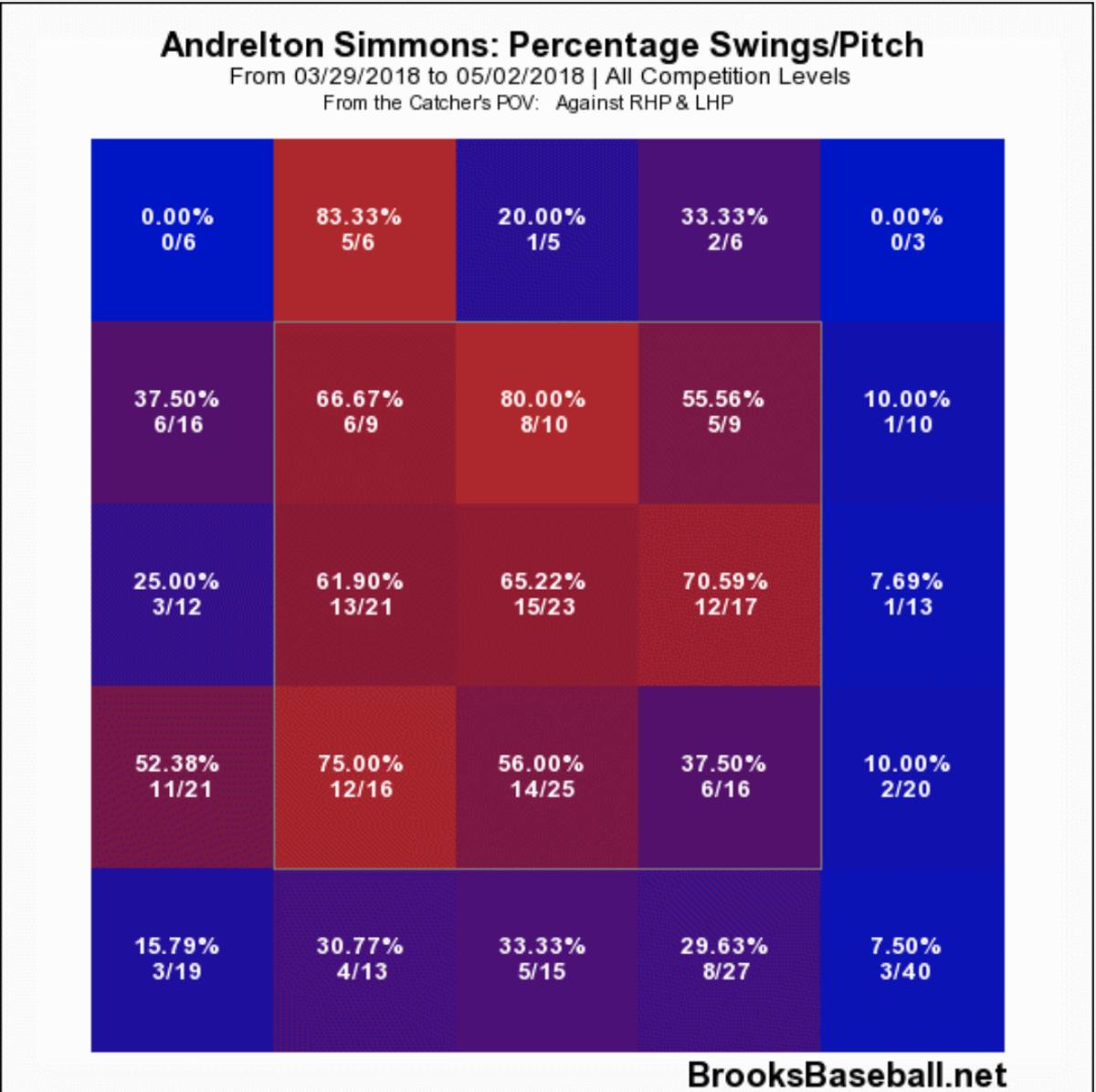
That 62.3% z-swing was more or less in line with his career mark of 64.3%. Since May 2, however, it has jumped to 68.2%.
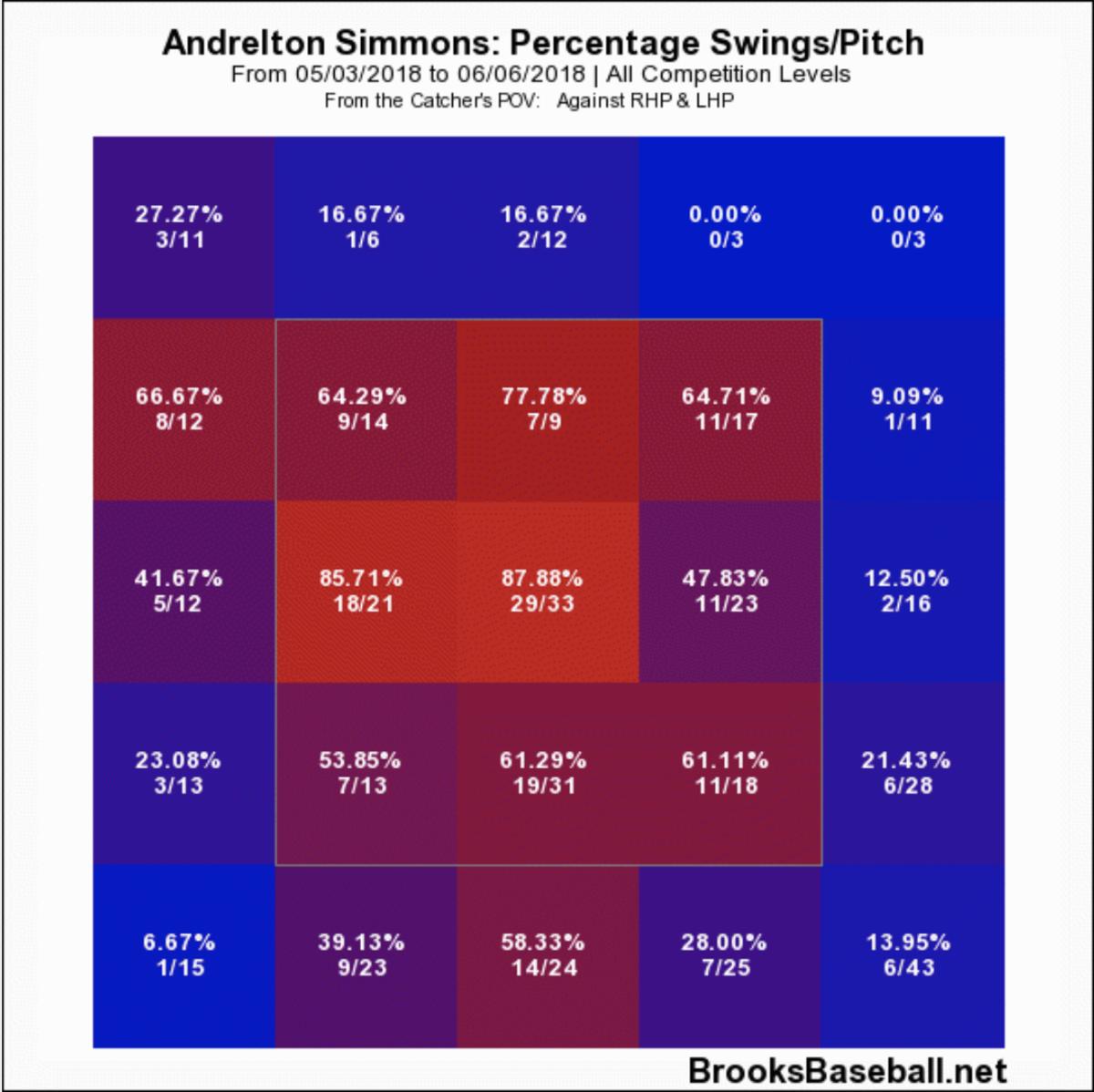
There’s the first piece of the puzzle. Simmons isn’t taking as many hittable pitches as he had previously in his career.
The second piece fits perfectly with the first. Not only is Simmons more aggressive overall, he’s more aggressive early in the count. Simmons has swung at the first pitch in 30.5% of his plate appearances since nearly eliminating strikeouts from his game. Through May 2, his first-pitch swing rate this season was 27.7%.
Now, to be fair, Simmons entered this season with a career first-pitch swing rate of 32.7%. However, he wasn’t nearly as discerning with those 0–0 swings as he has been for the last five weeks. His z-swing rate on 0–0 pitches from 2012 through last season was 44.9%. Since May 2 of this year, it’s 48.5%. Compare the following two charts, the first of which shows swing rates by zone on the first pitch of all plate appearances for Simmons’ career through last season, and the second comprises just the chunk of this season in question.
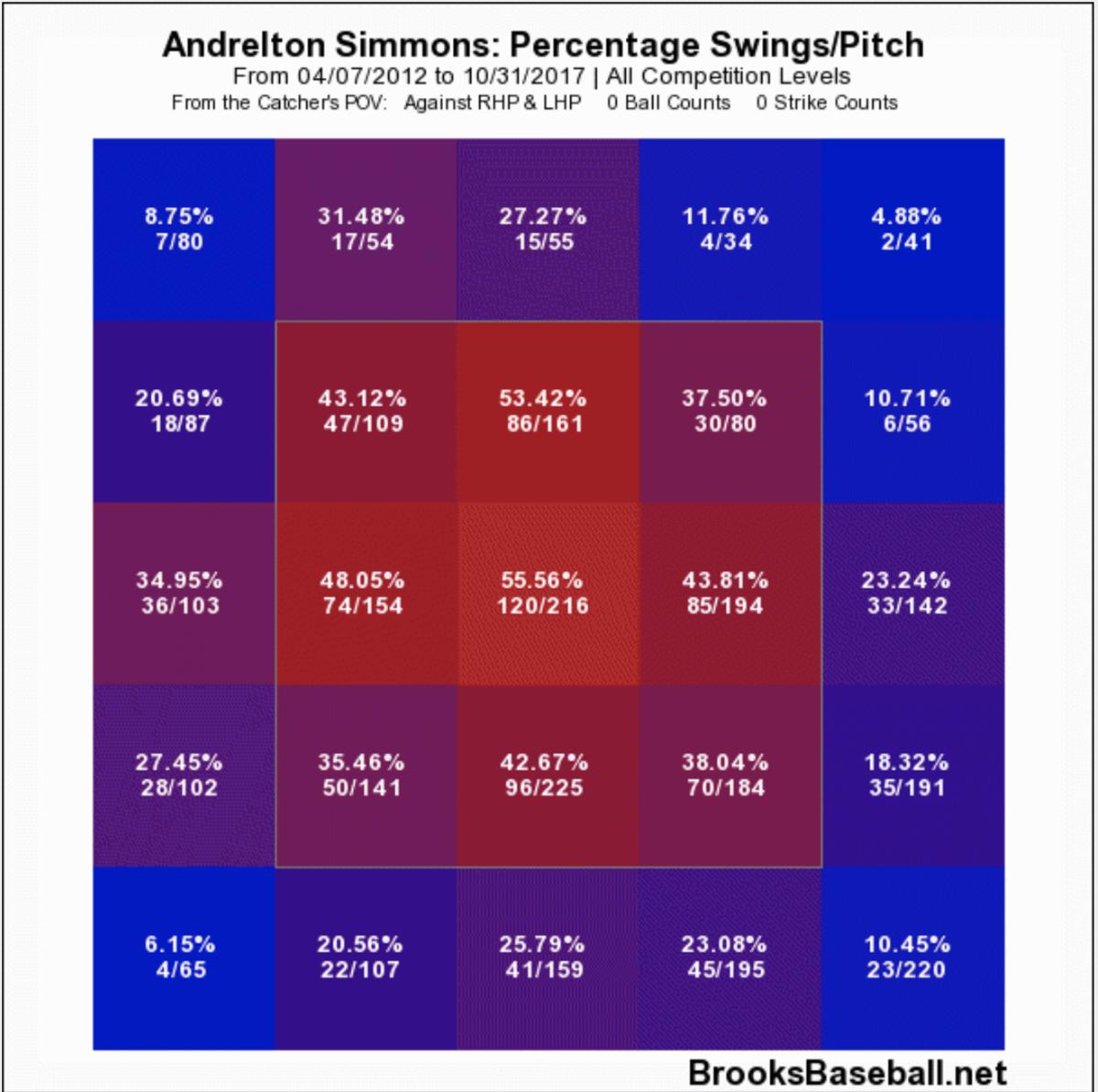
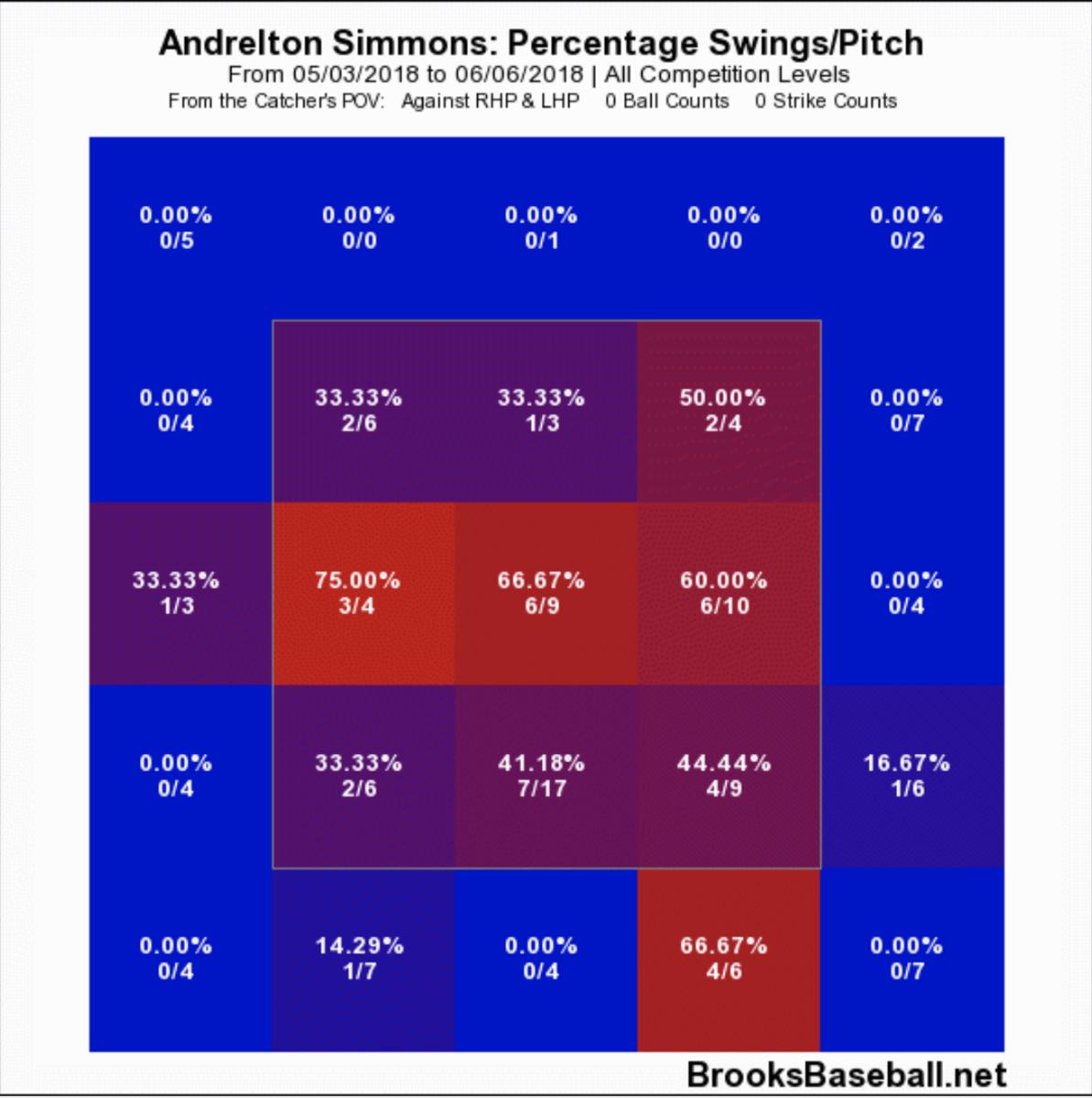
Pay particular attention to the row across the middle of the strike zone. Look at all those hittable pitches Simmons previously tracked into the catcher’s glove. Not only was he eschewing the possibility of doing damage on those pitches, but he was getting himself into far too many 0-1 holes simply by not swinging. He has taken major strides to combat that tendency over the last month.
The same is true of 1–0 counts. Through May 2, Simmons got into a 1–0 count 55 times. He saw 34 strikes in those 55 1–0 counts, swinging at 23 of them, or 67.6%. Since May 2, he has seen a 1–0 count 51 times. Pitchers have thrown him a strike in 24 of those counts, and he has swung 20 times, good for 83.3%. He’s 5-for-12 with two doubles, a triple and four RBI on those 20 swings. For the record, he was even better when swinging at 1–0 strikes before he stepped up the aggressiveness, going 6-14 with a homer and nine RBI. The fact that he has changed his approach to swing at more of them portends well for the future.
As you could probably guess at this point of the column, Simmons’ lack of aggressiveness on 1-0 strikes over the first month of this season jibes with his career numbers. Through last year, he had 1,161 plate appearances in his career get to 1-0. Pitchers threw him strikes in 652 of them, of which he swung at 413. That translates to a swing rate of 63.3%.
All this early count aggressiveness is keeping Simmons out of two-strike trouble. He has faced two-strike counts in 45 of his 131 plate appearances since May 2, a rate of 34.3%. Before May 2 of this year, he saw 43 two-strike counts in 112 plate appearances, which comes out to 38.4%.
Pitchers are getting better and filthier with each passing year. They have seemingly more options and weapons than ever to put hitters away in two-strike counts. One of the best ways to avoid striking out is to not get to two strikes in the first place. It also has the happy coincidence of more often forcing action on pitches in the strike zone. Simmons has put that all on display over the last month, turning himself into the hardest player to strike out since Tony Gwynn, and arguably in the last 80 years of baseball.
